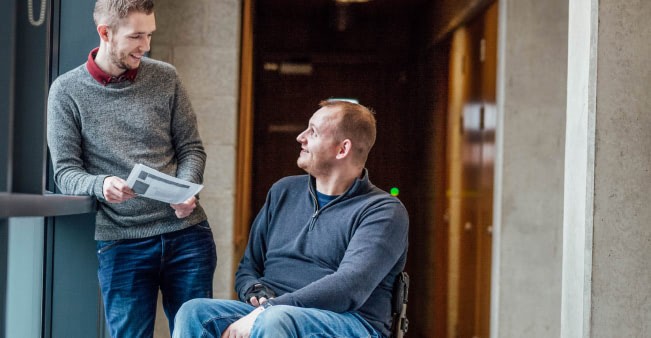A standalone diagnosis of Sensory Processing Disorder (SPD) will not be eligible as a ‘standalone’ condition under the category of Deaf/Hard of Hearing. Where an applicant meets the other criteria for eligibility for Deaf/Hard of Hearing and presents with SPD, then that applicant will be considered under this category.
Applications to DARE under Deaf/Hard of Hearing with a standalone diagnosis of SPD will be considered as a Neurological Condition (if diagnosed by a Neurologist OR other relevant Consultant. In cases where an applicant is in the care of a Neurologist or another relevant Consultant, the evidence of a disability can be provided by a Registrar who is a member of their team).
Applicants who are deaf or hard of hearing will be assessed on the basis of evidence submitted with the DARE Application. Evidence for three categories of applicant are acceptable.
Screening Criteria A Applicants who have an Audiogram
| Appropriate Professional | Diagnostic/ Clinical Audiologist registered with the Irish Academy of Audiologists (IAA) OR HSE Audiologist OR an ENT Surgeon. |
| Type of Documentation Required |
Audiogram.
Please note that a Hearing Aid Fitting Report will NOT suffice for the purposes of your application. Please ensure to provide the correct documentation as above. |
| Required Age of Report | While there is no age limit on diagnostic evidence submitted, it is advisable to submit a recent report. |
| Other Disabilities | Submit an Evidence of Disability Form for each disability/ condition to be considered. |
| Educational Impact Statement (EIS) | The Educational Impact Statement allows you and your school to provide detail of how your disability has impacted on your second level experience. The EIS is a requirement for all applicants. The Department of Education and Skills Visiting Teacher Service can also submit a Transition Report for a DARE applicant; however, this is not a substitute for the Educational Impact Statement. |
| DARE Eligibility | The applicant is eligible once: the audiogram shows a bilateral mild to profound hearing loss (i.e. anything greater than 20dB) or a unilateral moderate hearing loss greater than 40dB across 3 frequencies AND the applicant meets any combination of two educational impact indicators from Indicators 1 to 5 on the EIS. |
Screening Criteria B Applicants attending a Deaf School
| Appropriate Professional | Principal of School for the Deaf. |
| Type of Documentation Required | A Letter confirming attendance from Principal of School for the Deaf OR Complete the Evidence of Disability Form 2025. |
| Required Age of Report | While there is no age limit on diagnostic evidence submitted, it is advisable to submit a recent report. |
| Other Disabilities | Submit an Evidence of Disability Form for each disability/ condition to be considered. |
| Educational Impact Statement (EIS) | The Educational Impact Statement allows you and your school to provide detail of how your disability has impacted on your second level experience. The EIS is a requirement for all applicants. |
| DARE Eligibility | The applicant is eligible once the Principal of a Deaf School in the Republic of Ireland confirms their attendance in the school and their status as a Deaf student AND the applicant meets any combination of two educational impact indicators from Indicators 1 to 5 on the EIS. |
Screening Criteria C Applicants with a Cochlear Implant or Bone Anchored Hearing Aid (BAHA)
| Appropriate Professional | Ear Nose and Throat (ENT) Consultant OR Cochlear Implant Programme Coordinator. |
| Type of Documentation Required | Applicants may submit an existing report by an ENT consultant if it contains the same detail as the Evidence of Disability Form OR Complete the Evidence of Disability Form 2025. |
| Required Age of Report | While there is no age limit on diagnostic evidence submitted, it is advisable to submit a recent report. |
| Other Disabilities | Submit an Evidence of Disability Form for each disability/ condition to be considered. |
| Educational Impact Statement (EIS) | The Educational Impact Statement allows you and your school to provide detail of how your disability has impacted on your second level experience. The EIS is a requirement for all applicants. |
| DARE Eligibility | The applicant is eligible once the evidence from the ENT consultant OR Cochlear Implant Programme Coordinator confirms the applicant has received a cochlear implant or a bone anchored hearing aid (BAHA) AND the applicant meets any combination of two educational impact indicators from Indicators 1 to 5 on the EIS. |


